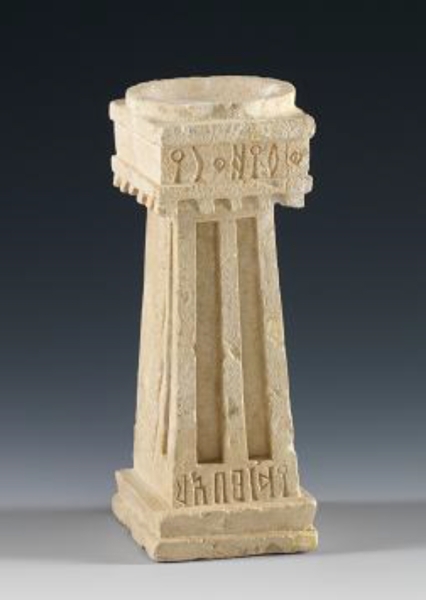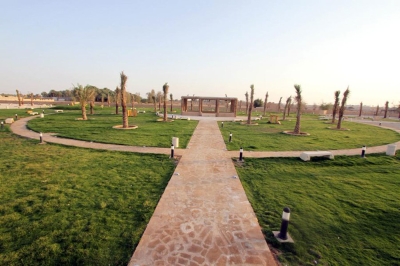
The Limestone Censer is an ancient censer carved and made from limestone, used for burning incense and aromatic plant materials. It was discovered in Qaryat al-Faw, one of the archaeologically rich sites located southeast of Wadi ad-Dawasir Governorate in Riyadh Province, in the Kingdom of Saudi Arabia. It is one of the artifacts selected to be showcased in the Saudi Archeological Masterpieces Through the Ages Exhibition held at the Louvre Museum in 2010.
Description of the limestone censer
The limestone censer has a rectangular base composed of two stepped platforms, with the lower one being slightly wider than the one above it. Rising from the second platform is a conical column that narrows as it ascends. The front of the column is designed to resemble a series of columns. At the top, there is a square-shaped capital, wider than the column itself, consisting of a platform resting on the column’s peak, followed by a broad stone band, another platform above it, and at the center, a circular carved basin with a raised rim extending above the surface of the platform. The lower part of the censer’s column features an inscription in the ancient Musnad script, while the area below the lower platform of the capital is decorated with carved rectangular motifs.
Dimensions of the limestone censer:
Height: twenty-three cm.
Width: nine cm.
History of the limestone censer:
The limestone censer dates back to between the third century BCE and the third century CE. It is preserved at the National Museum in the capital, Riyadh, and was selected as part of a diverse collection of archaeological discoveries from Saudi Arabia for the Saudi Archeological Masterpieces Through the Ages Exhibition, which was held at the Louvre Museum in the French capital, Paris, in 2010, along with several other museums worldwide. The exhibition included three hundred artifacts of various materials and historical periods, all original pieces from different regions of Saudi Arabia. These artifacts were classified into three groups based on their historical sequence: prehistory, pre-Islamic periods, and Islamic periods.
The discovery of the limestone censer is one of the results of archaeological survey and excavation efforts carried out by the Antiquities and Museums Sector in Saudi Arabia over the years. It was found as part of the discoveries made by Saudi archaeologists and scientific missions. The censer is registered under the number 2184.
Significance of the limestone censer
This limestone censer is distinguished by its vertical design, where the artisan incorporated a variety of architectural and decorative elements, such as false windows and serrated shapes. The craftsmanship and diversity in censer designs reflect the artisans' strong connection to their customs and traditions, particularly those related to burning incense and aromatic materials.
Related quizzes
Related articles

